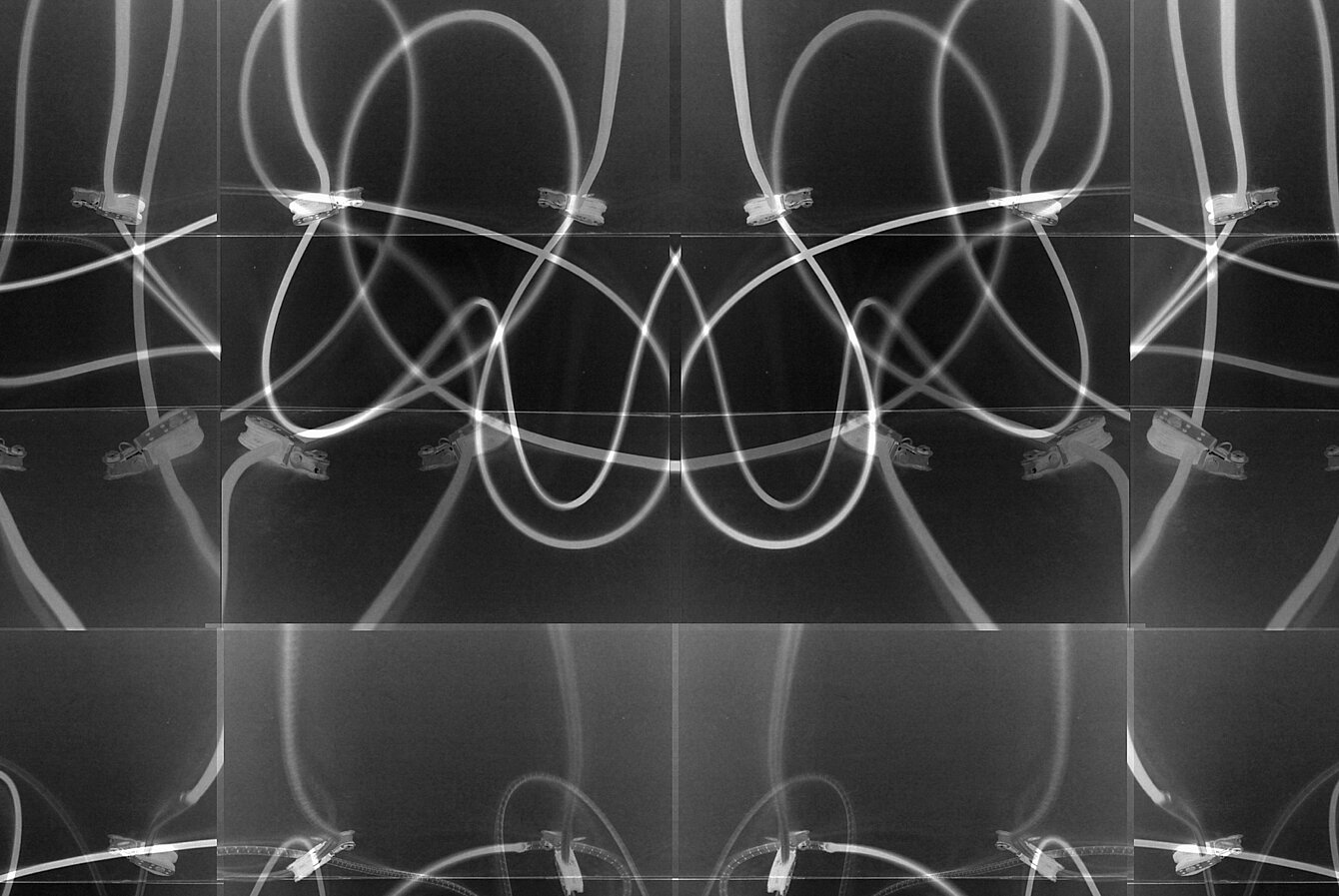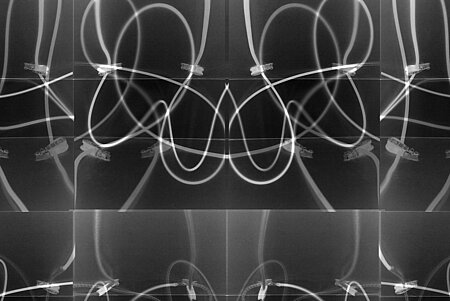In 2004, Thomas Baumann’s plot:bach marked the beginning of a series of projects for the BIX Media Facade at the Kunsthaus. The starting point at that time was a pixel machine, software developed by Baumann himself that visualized a piece by Johann Bach and so – soundlessly – played music over the facade. In the course of his solo exhibition at the Kunsthaus, Herbert Brandl (who had seen plot:bach and was fascinated by its precise realization) asked his artist colleague to develop a new project for the BIX.
Alluding to the inherently analogue nature of painting per se and Brandl’s works in particular, Baumann decided to use the lines formed by chance and physics that create Shape and Shade. He filmed the movements of the rope in order to tailor the work to the specific requirements of the BIX facade. The rope becomes a drawing machine; the Kunsthaus is enmeshed, interlaced, cocooned. As in other works, Shape and Shade involves the element of time in the form of rhythm. Thinking in terms of sculpture, Baumann does not distinguish time from space – and so also makes the laws of nature themselves waver and oscillate.
Thomas Baumann
Shape and Shade


Image Credits
Duration
22.10.2020 - 07.03.2021
Location
Kunsthaus Graz, BIX Fassade
Show all
About the
Project
Herbert Brandl features Thomas Baumann. Black or white, yes or no, 0 or 1? In his examination of digital processes, Baumann uses straightforward decisions such as these to determine what might seem like a simplistic approach to complex correlations.
With a subtle irony, Baumann parodies the unquestioning faith in technology of our times, and shows us that machines are in fact the better people. When we view his works, their mechanical forms of expression can appear superficial – and yet complicated interventions are behind them. Adopting a rigorously matter-of-fact attitude to technology and electronics, Baumann leaves many decisions up to his machines, which he himself makes painstakingly by hand. The ‘chaos, behind which there is also order’ (Baumann) and the associated element of chance are formative elements of his work – whether in kinetic sculptures such as his Federn (2004-) or the paintings produced by the computer-operated Plotter (2000-).
The movements of the work Shape and Shade are also machine-driven. Originally executed as a sculpture (shown at the Educational Alliance Gallery in New York in 2005), its small motors make sewn ropes oscillate in endless, incalculable movements. The Educational Alliance has a historical background as a shelter for immigrants who, as is well known, crossed the ocean by ship. This prompted Baumann to use materials sourced from shipbuilding: a black and a white rope, seamlessly merging, formed an endless line twisted into sculptural loops by the machine’s drive. Within the subtext of the work (with the subtitle for a black and a white rope) resonate themes of refugees and racism, subjects which – as recent events have shown once again – continue to find breeding grounds in our society. In 2008 Baumann further developed this work for the Renaissance Society in Chicago, this time using thick ship’s ropes – typical of Baumann’s approach is that he takes ideas that he has previously implemented and adapts and revises them for other locations and contexts.


















